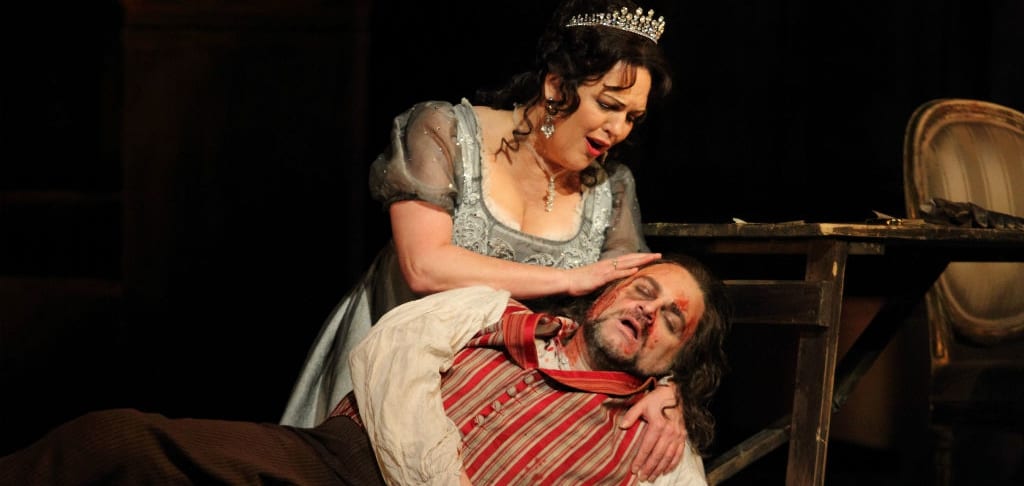What is there new to say about Floria Tosca’s journey from piety and artistry through to a final symbolic confrontation with Baron Scarpia on the battlements of the Castel Sant’Angelo? Tosca is one of those operas, like Figaro, that yields something fresh on every hearing, in this case a reminder of just how brilliantly concise and economical the music is with all that you need to crystallise the emotions of the moment before moving on in quicksilver fashion to the next twist and calculation of the tight plot. Mahler should have tried it himself rather than disdaining to conduct the piece. You are also reminded of how Puccini uses Wagner to advantage in this cause by using repeated themes associated with each of the three main characters to great dramatic effect. It is worth remembering this opera is sub-titled a ‘melodrama in three acts’, so it seems more than a tad unfair to regret the extremes of joy, pain and despair enacted here. It is what it is, and the performances and productions that resonate down the decades are those that have willingly and none-too-fastidiously embraced this truth.
Unfortunately, this revival is only intermittently one of them.
The greatest strengths of this rendition (though there are two changes of cast to come) rest with the meticulous historicism of Jonathan Kent’s original production, and the performance of Adrianne Pieczonka in the title role. Kent had a hard act to follow in the famous Zeffirelli production that had owned Covent Garden for years. But his brilliant designer, Paul Brown, to whom the press night was rightly dedicated as a memorial tribute, came up with a set both bursting with Baroque detail, and also intensely practical, by creating a natural showcase for the set-pieces of the Te Deum, the rich interior of the Palazzo Farnese, and the final battlements under a gathering dawn. Pieczonka fills these spaces with ample vocal assurance drawn from her past successes in Wagner and Strauss, and is fully abreast of the dramatic challenges whether expressing coquettish jealousy, anguish at the torture of her lover, or cunning plotting in pitting herself against Scarpia. Her singing of the show-stopper aria Vissi d’arte was all the more affecting for doing the opposite – by avoiding theatrics and simply telling an unaffected life-story.

However, her colleagues were not in her league. Calleja sang his famous Act III aria with style and showed vocal heft throughout; but this was not matched in his acting which seemed perfunctory and disengaged for the greater part. Even more disappointing was Gerald Finley, undoubtedly a great singer, but strangely subdued in the role of Scarpia. While the ingeniously contriving police chief does not need to be played as a lubricious slob in the way Terfel has pioneered in this very production, he does have to have menace and presence to match his orchestral signature. When Scarpia is out-sung by the choir at the end of Act I, you begin to worry, and Act II never gave you the sense of gathered malice, and of a psychological screw tightening to match the actions of the torturers offstage. Courtly gallantry is fine, but only so long as you feel the steel beneath the velvet glove. Gobbi gave both, but Finley is simply too nice a man for this role.
Minor roles are very well taken: Angelotti, the sacristan, Spoletta, and the shepherd boy whose song open Act III, all take their moments memorably (and it is a tribute to Puccini’s generous writing that they all do have such moments). The chorus also perform sterling work at the end of Act One. In the pit Dan Ettinger lingers a bit too much over the most famous episodes, but the orchestra produces some wonderfully delicate sounds in the quieter moments, especially from a truly plangent string section. The mostly subdued lighting and deeply cast shadows are well contrasted with the brilliant colour and glitter of the period costumes.
This production is still a wonderful showcase for the opera but without casting a central trio that spark off each other with equal power it can never fully succeed.

